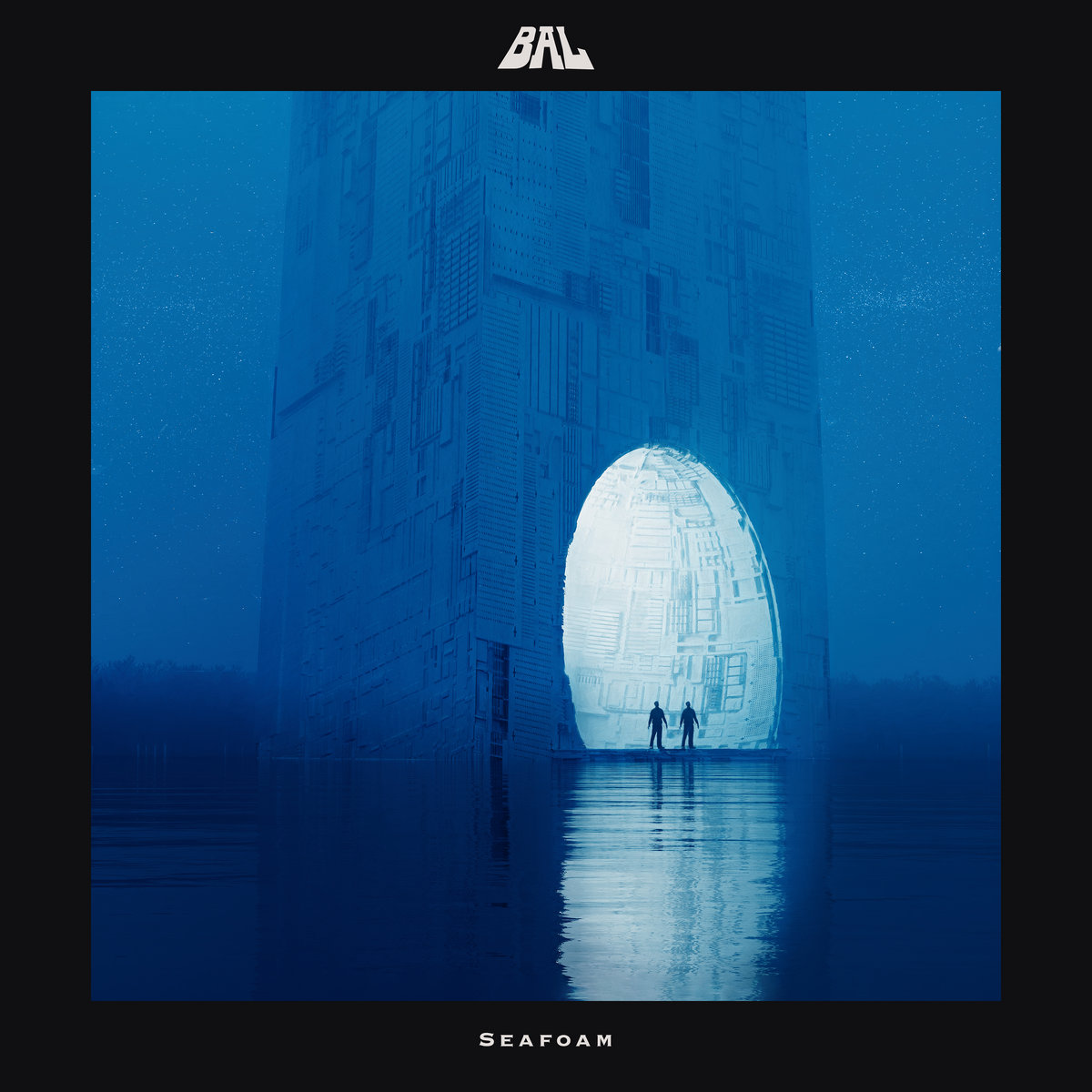Cassette Culture is a monthly column dedicated to exploring the various artists that inhabit the expansive cassette market. Drawing from bands and labels around the world, this column will attempt to highlight some of the best artists and albums from this global community.
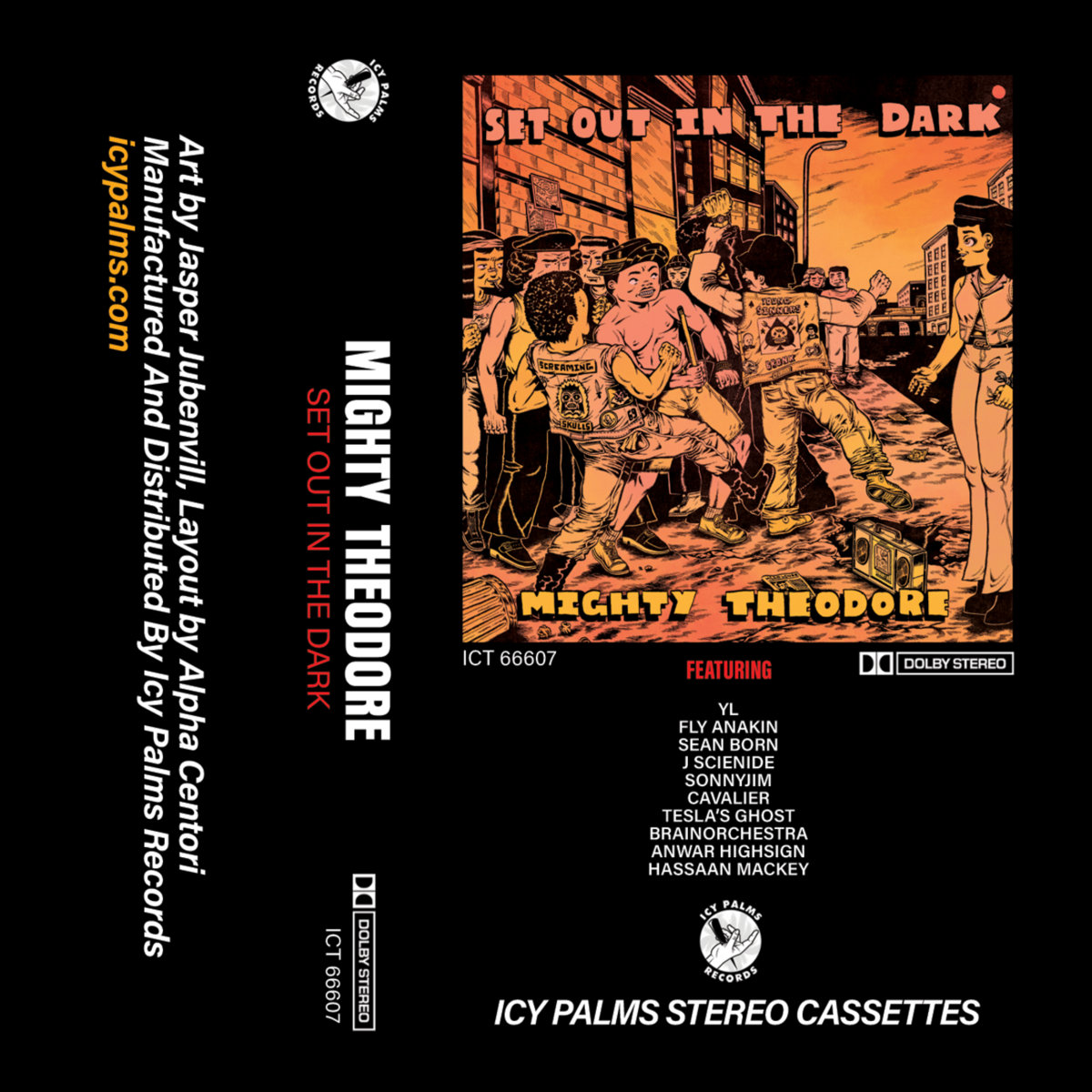 Mighty Theodore
Mighty Theodore
Set Out in the Dark
(Icy Palms Records)
There’s been a lot of darkness in the life of DJ and producer Mighty Theodore, enough to fill volumes, and on his latest album, Set Out in the Dark, he translates those pervasive shadows into a collection of songs highlighting the need for perseverance as we traverse this darkened world. Featuring guest spots from Fly Anakin, Sean Born, J Scienide, Tesla’s Ghost, Brainorchestra, and a handful of others, the record draws inspiration from films like The Warriors and 80 Blocks from Tiffany’s – as well as the chaos surrounding the New York City blackouts in 1977 – to create a simmering brew of angst, anger, and frustration at countless lost opportunities and a desire to rise above the noise and violence that marked his youth.
These tracks move with an assured direction, aided by a confidence that pours from Mighty Theodore, and it ultimately speaks on larger issues of generational trauma, redemption, and the need to endure and to create something to pass on to those who come after. Hip-hop has rarely felt this personal and vital, and so unanchored from any specific point in the genre’s history. Set Out in the Dark is a revelation of intimate associations and volatile musical experimentation, and it stands as a reflective triumph for an artist who yearns to provide a spark of hope for those whose struggles threaten to overwhelm them.
 Snowpoint Lounge
Snowpoint Lounge
感情 EP
(Lightsurf Tapes)
The music of Snowpoint Lounge exists in an eternally gauzy ether which houses all sorts of “-wave” subgenres. For their 感情 EP, there is a tendency to wander through the vaporous avenues of jazzwave and to find meaning in the act of breaking down and reassembling various musical aesthetics. These songs have no real definition, but that isn’t to their detriment. The music purposefully shields its meanings behind glossy instrumentation and ethereal rhythms, buoyed by jazz percussion and a need to obliterate musical convention. Elements of new age and ambient ripple just beneath its surface, adding to the overall haze of mysterious intent that the album sustains.
These songs rely upon individual impressions, as each one functions without concrete borders or melodic specificity, offering landscapes through which we can vent our internal emotional conflicts without needing to adhere to a certain musical history. And it’s in this vague sense of association that allows it to operate from a truly limitless perspective, as we imprint our own revelations and epiphanies to its moments of weightless design and possibility. It’s the kind of album that requires multiple listens and reveals subtle variations and shades of emotional vulnerability with each plunge into its complicated depths.
North Carolina alt-rock duo BAL – founded by Jack Foster and Jordan Powers of Far-Less, House of Fools, Sarah Shook & the Disarmers – take the crunchy guitars and driving rhythms of bands like Failure and Local H and imbue them with their own distinct aesthetic, a mixture of riotous rock and roll and sci-fi ideology. Their debut album, Seafoam, finds them exploring a grungy, raucous sound that recalls the roar of modern rock radio from 1993-1996. Crammed in between science fiction terminology and melodies that get stuck in your head for days, the band offers up some of the chunkiest riffs this side of a Mudhoney record. The guitars are saturated beyond belief, and the drums are capable of pulverizing granite, but the band still focuses in on the underlying foundation of this thumping noise.
As much as you’re going to be twisting your neck out of place to keep up with its pummeling movements, you’re just as likely to be reveling in its ability to evoke both the past and the present without wallowing in the successes of its influences. They work within a familiar sound, but Foster and Powers have found a way to make these churning sounds feel brand new and vital, reinvigorating these alternative atmospheres and providing suitable support for Seafoam to grow and evolve into a mantle bearer for 90’s-era hard rock.
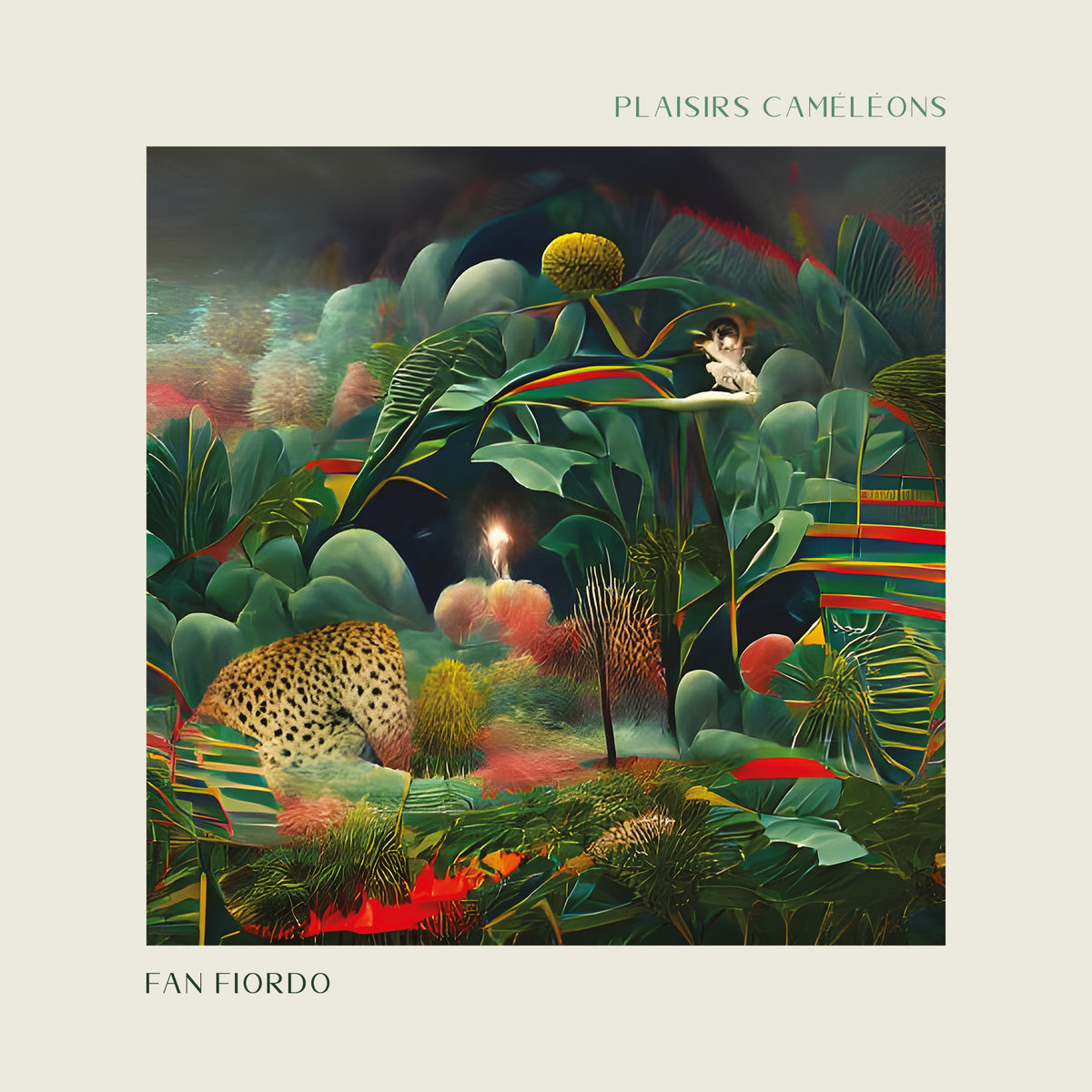 Fan Fiordo
Fan Fiordo
Plaisirs Caméléons
(Underwater Computing)
Argentinian producer Fan Fiordo has long held an affection for the MPC-11 “Akira” soundcard and for the ways in which it can channel and express the complexities of the Korg M1 synthesizer. In fact, his latest album, Plaisirs Caméléons (or Chameleonic Pleasures), is built around these pieces of hardware and software, evoking an eclectic and 80’s-leaning sound that utilizes an array of spry chimes, dramatic percussion, ethereal choirs, and all manner of oscillating tones. Skirting the edges of ambient and vaporwave, these songs dip into those often-formless genres while also maintaining something resembling a complicated skeletal structure.
There’s also something slightly hypnagogic about these songs, as they feel like soundtracks to those moments just before you fall asleep, all vague impressions and fuzzy emotional associations. But even here, when our subconscious is vying for control, you can still detect a subtle direction orchestrated by Fiordo, melodies that repeat and branch out at all angles and lead us under the veil of sleep. Veering between a wash of minimal circuits and lusher tides of sound which feel cushioned within their individual landscapes, Plaisirs Caméléons is a byzantine detour through influence and inspiration, through pop and house music, and through the countless possibilities of modern electronic music.
 Sean Trelford
Sean Trelford
Care Home Party
(Hidden Bay Records / Field Mates Records)
It’s hard to believe that recording began on Sean Trelford’s debut album, Care Home Party, when he was only 14 years old. The Cambridge musician suffered heartache and lockdown (as we all did to varying degrees) in 2020, and in those months, he began the work of writing and recording the songs that would form the basis of his first record. These tales of angst, ache, and frustration are all writ large in shades of lo-fi bedroom pop and indie rock, telling a story of how he endured and processed this period of pain in his life. Between lilting piano revelries and emotional outbursts, Trelford adopts a genre-spanning perspective, one that allows him to cobble together an aesthetic fitting his needs and which avoids laying allegiance to any specific musical lineage.
“Never Got Anywhere” drifts by in a hazy blur of DIY pop motions while “How was I Supposed to Know?” is a little more dissonant in its reveal, with noisy percussion colliding with fuzzed-up guitar and dramatic keys. “Our Last Goodbye” closes out the album with gentle piano lines and vocals that sound as though they recorded six feet underground – and that’s all before it erupts into a ragtime-adjacent gallop before once quietly drifting back away from Trelford’s grasp. Driven by an urgent need to express incredible heartache while also adjusting to the turbulence of a pandemic-marked world, Care Home Party is his way of offering some measure of understanding for all those shouldering the weight of their own troubles.
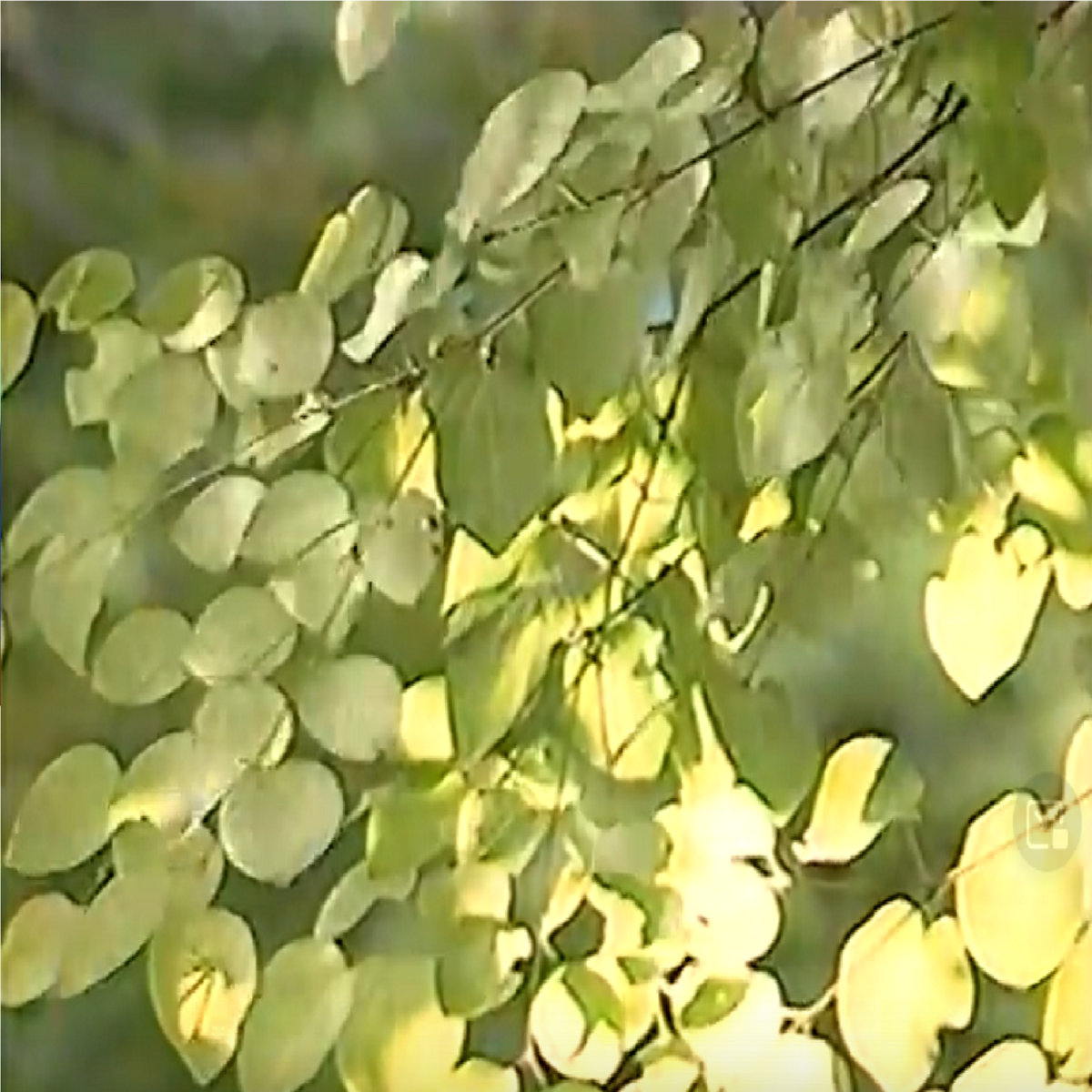 永遠的悲傷思考
永遠的悲傷思考
會議總理
(Illuminated Paths)
Listening to 會議總理, the ambient and experimental new album from 永遠的悲傷思考 (roughly translated to “sad reflections on forever”), you get a sense of infinite horizons stretching out beyond our comprehension. There is a miraculous expanse here, one that feels both alien and familiar, a slowly churning smear of incandescent tones and droning rhythms. Each track is a world to explore and obsess over, its musicality subject to our own perspectives and headspace. There is a greater sense of dynamism to this album than some of its electronic peers, and that’s due to the inherent flexibility of its author, a figure cloaked in anonymity whose ability to turn these variables sounds into something grand and emotionally involving seems supernatural in its execution.
As ever with vaporwave and ambient collections, much of what you get out of it correlates to what you bring to its cavernous recesses. With each bent note and wavy contour, you find yourself drawn further into landscapes from which there seems to be no escape. There’s precious little information about the release, but I believe it functions as a score to a film – and when viewed from that angle, it reminds us of the power of aural and visual collaborations. These songs wander and mesmerize as they unfold, but they also evoke odd images of ruin and stillness and rebirth, ultimately sculpting a beautiful ode to the instability and adaptation of life.
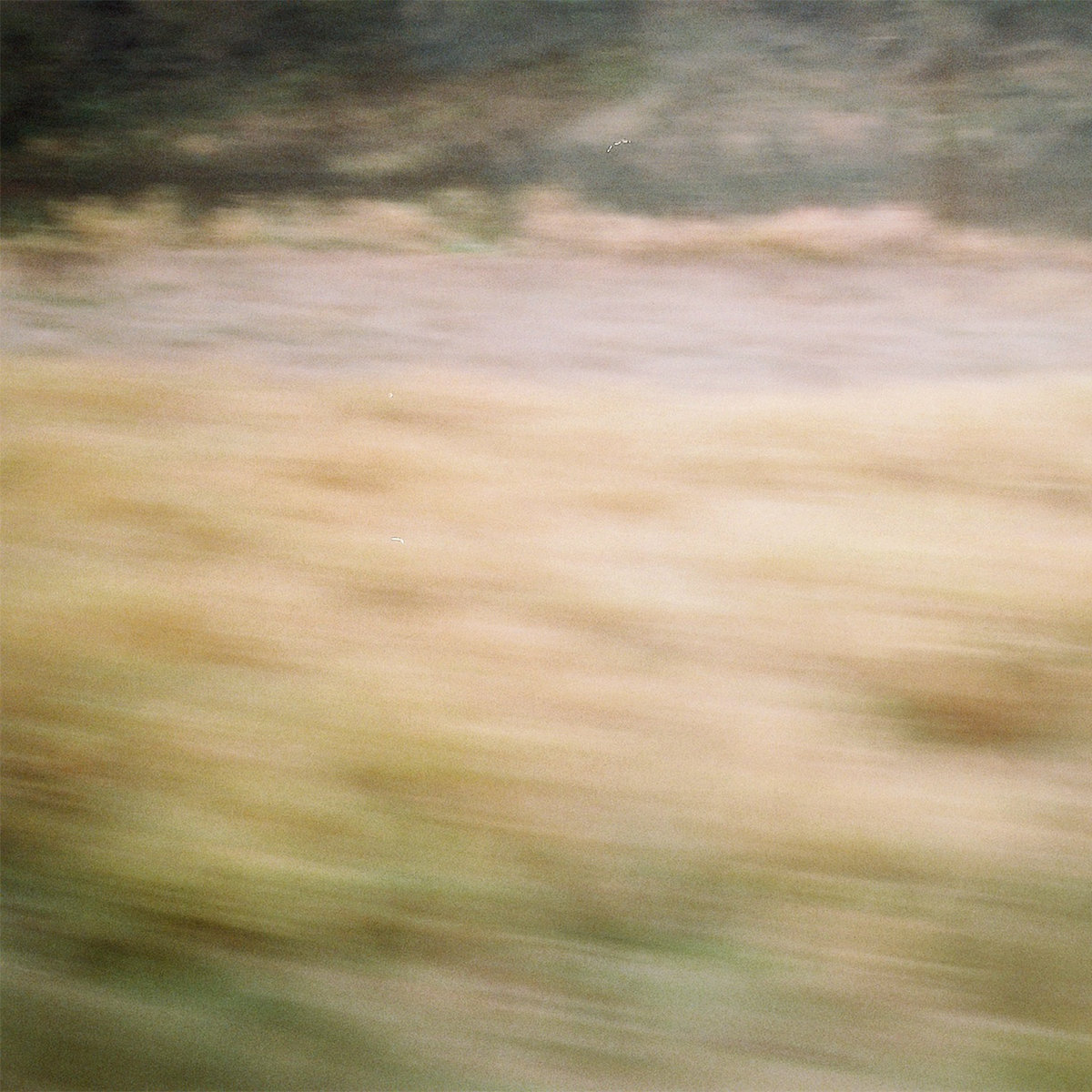 Blue Chesterfield & Pavel Kielberger
Blue Chesterfield & Pavel Kielberger
Songs for the Fall
(Self-released)
Czech musicians Blue Chesterfield (aka David Jirka) and Pavel Kielberger got together back in the fall of 2021 to record a series of songs pairing ambient rhythms with fluctuating guitar lines, creating a 6-track album called Songs for the Fall. Synths and programmed drums also whirl around in the mix, providing a bit of structure to the wispish strums and plucks. Ghostly vocals occasionally appear, working their way between the sounds, establishing a noticeable momentum even when the tempo of the music slows to a crawl. Whether it’s a slow burn or something more uniquely tangled, Jirka and Kielberger manage to inject a necessary vitality in their work, resulting in a noise alternately weightless and intricate.
From the extended ambient opening of “Fig. 20” to the clacking percussion and ethereal voices layered throughout closer “At Them”, Songs for the Fall presents a wide-ranging viewpoint on the intersection of a handful of genres. Recalling the avant approach of Harold Budd and Brian Eno and infusing each track with a nervous energy, they allow their influences to direct their methods without becoming burdened by the histories of those same musical antecedents. Riding a parallel tangent from the typical ambient mechanisms, Jirka and Kielberger have fashioned a collection that speaks to their shared affection for ambient movements and lithe fretwork.
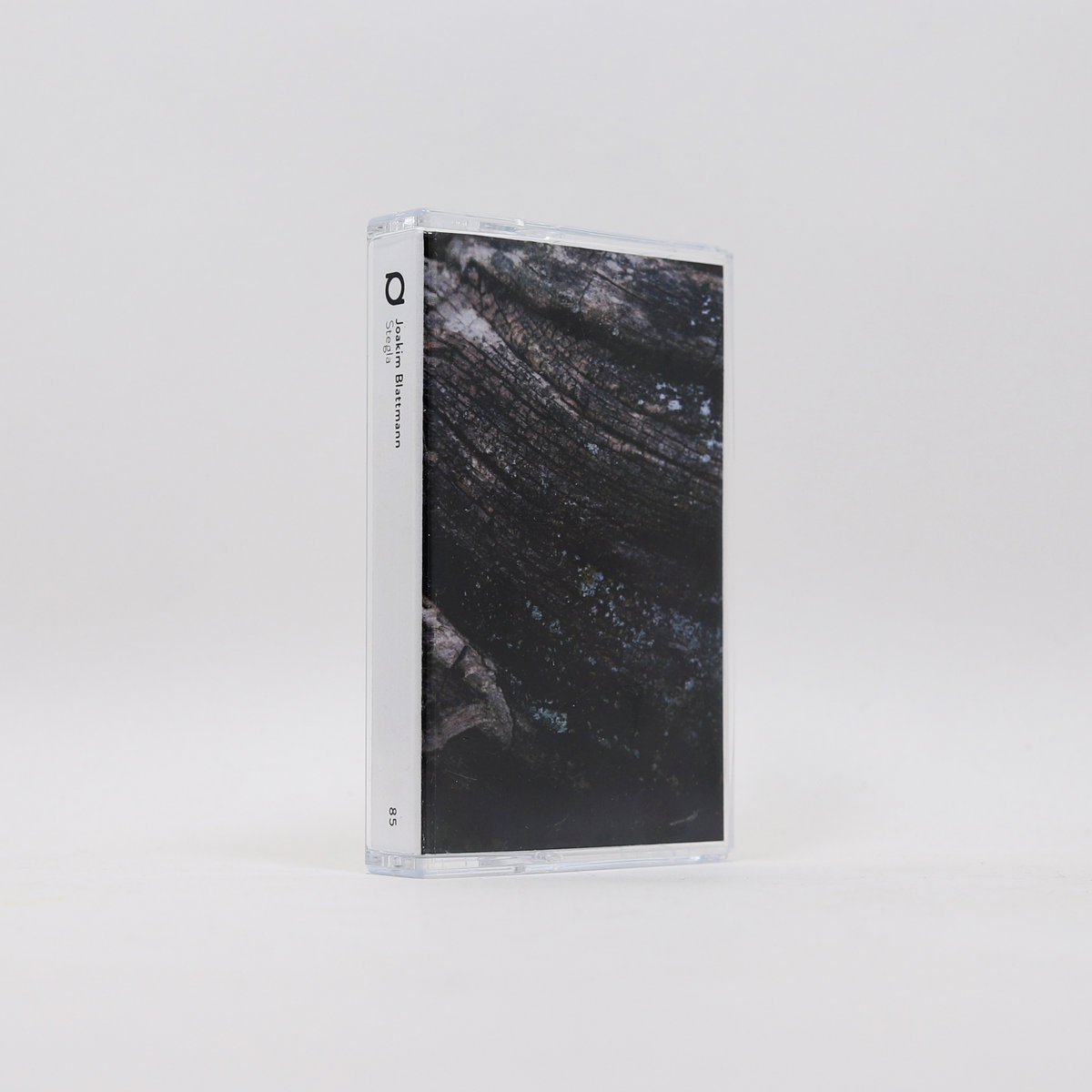 Joakim Blattmann
Joakim Blattmann
Stegla
(Dinzu Artefacts)
Earlier this year, Oslo sound-artist Joakim Blattmann took part in an audio installation at the Buskerud Kunstsenter in Drammen, Norway. The exhibit presented a series of sounds drawn from trees and the insects which call them home. These experimental aural passages, collected as Stegla, were controlled in real time through bioelectric signals from the trees and further amplified through surface transducers attached at various points on each one. For the official release, these recordings have been combined and treated with different electronics and tape machines to highlight the innate variations hidden within this arboreal soundscape. Comprised of two parts, this album works as a snapshot of nature in motion, of textural modulations driven by the introduction of synthetic mechanisms into a world of absolute organic processes.
It would be generous to characterize this as music, but it does develop its own cadence, its own manner of speaking that resolves through melodic echoes from the trees and its host of various segmented residents. There are moments when you feel as if you are immersed in a dripping forest of earthen rubbish and overcast skies. Blattmann has concocted an ingenious way to pull these sounds from nature, to give voice to things which have never been allowed to talk in their own distinct ways. The best way to experience it to let it wash over you, allowing it to fully engulf your senses. And through this album, you begin to see a vast undiscovered world of sound surrounding us and the ways in which we can interact with and perceive these unseen landscapes.
 Hamish Lang
Hamish Lang
Seasons
(Hush Hush Records)
During a particularly rough lockdown in Melbourne in 2021, sound artist Hamish Long was inspired to write the tracks which would become his latest album, Seasons. Living at home with his partner, who happens to be a florist, Long was constantly surrounded by various flowers and sought to create something that would similarly hum with its own life – something a bit less ambient than some of his earlier records. He wanted to tap into the vivid energies and vibrant hues of the plants that continually flooded his cloistered reality. Tapping into the amorphous shapes and angles of his previous releases, he imbues these tracks with their own evocative atmospheres, each a dynamic response and rebuttal to feelings of isolation and personal distancing.
It doesn’t completely break with his past work, but Seasons is a more fully developed realization of his ambient tendencies, packed with neo-classical impulses, IDM reactions, and subdued house soundscapes. There’s a radiance operating from within each song, unfolding into a sense of acceptance and understanding of the troubles Long is attempting to circumvent. From the loosely gathered piano tones in closer “Piano Sleep” to the gorgeous synths radiating from “Scarlett, he breaks down the basics of ambient music and plays around with momentum and stillness in ways that feel modern and innovative. Oddly gravitational and drawn out through vast regions of sound, these songs envelop their audience, reminding us that there are still many things left to discover in this inclusive blend of genres.
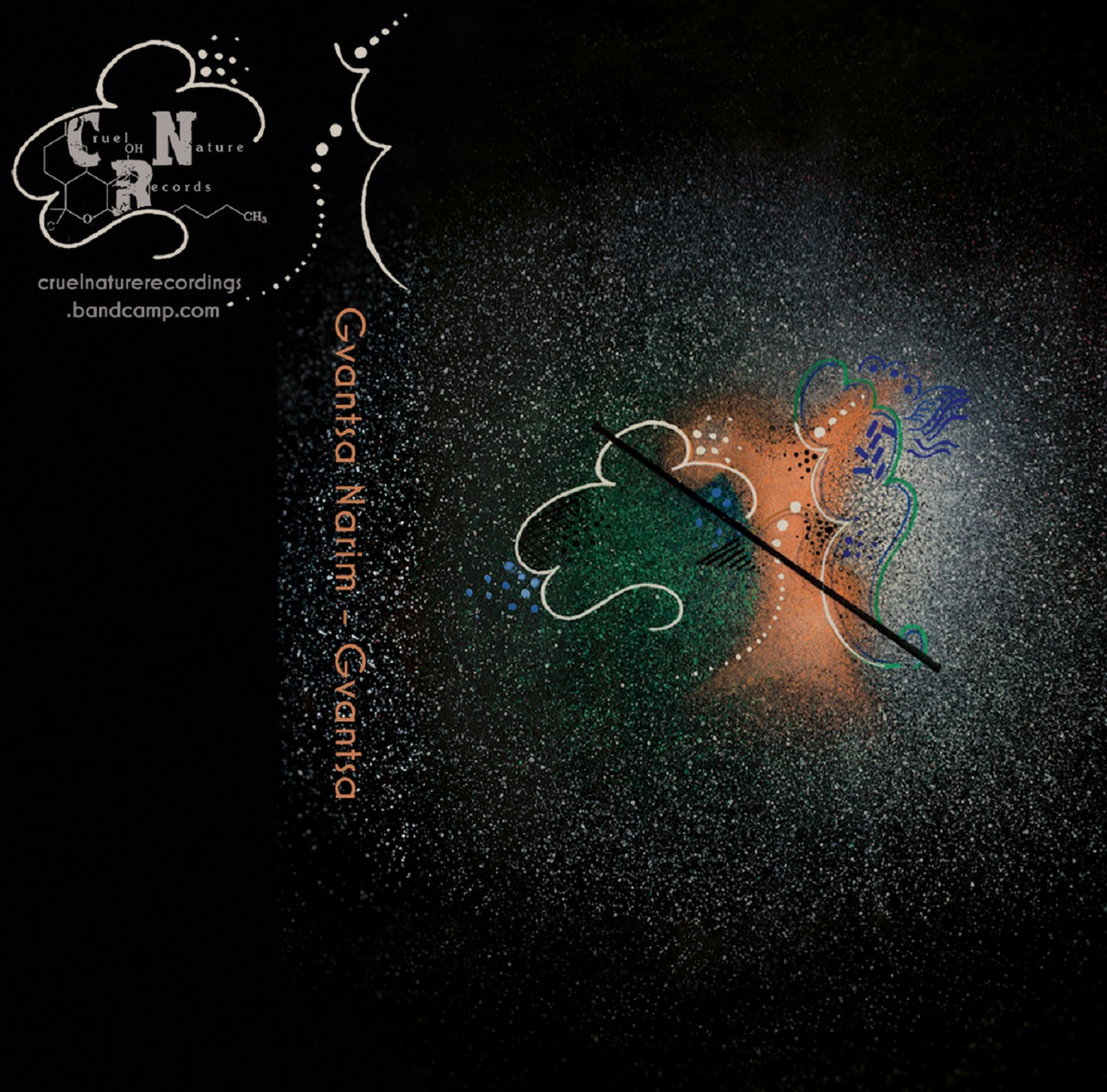 Gvantsa Narim
Gvantsa Narim
Gvantsa
(Cruel Nature Records)
Written and recorded in Tbilisi, Georgia between 2018-2022, Gvantsa Narim’s new album Gvantsa is an insightful look into the way she functions as an artist. Drawing inspiration from spirituality, esotericism, and Georgia polyphonic music, she crafts a droning brew of ambient repetition, lite-psych ramblings, and a bit of post-rock theatricality that adapts and shifts its perspective through a series of ghostly electronic experiments. Driven by dense emotions lurking just beneath its measured surface, the record allows Narim to explore a wide range of feeling while plumbing the depths of this seemingly bottomless rhythmic mixture. Steering away from resolutely darker territories, she embraces a lightness and an innate benevolence which so few artists investigate with any serious consideration.
From the gentle piano notes of opener “Gvantsa” to “Levitation”’s extended drones and the twinkling passages of “Shoretis Melody”, the album is in constant motion, never rushed or disoriented but moving froward at its own pace. The album’s cover is centered around a motif from Georgian avant-garde painter David Kakabadze, and the six tracks here similarly function as a means for unfiltered artistic interpretation – in this case, Narim’s otherworldly ability to transcend usual musical conventions and develop a sound that feels as if it’s feeding off of and responding directly to our own emotions. We come to know her a bit better through the glistening rhythms and wobbly melodies presented for our enjoyment, fostering an unseen bond with her as she slowly reveals details about herself via the experimental divinity of Gvantsa.
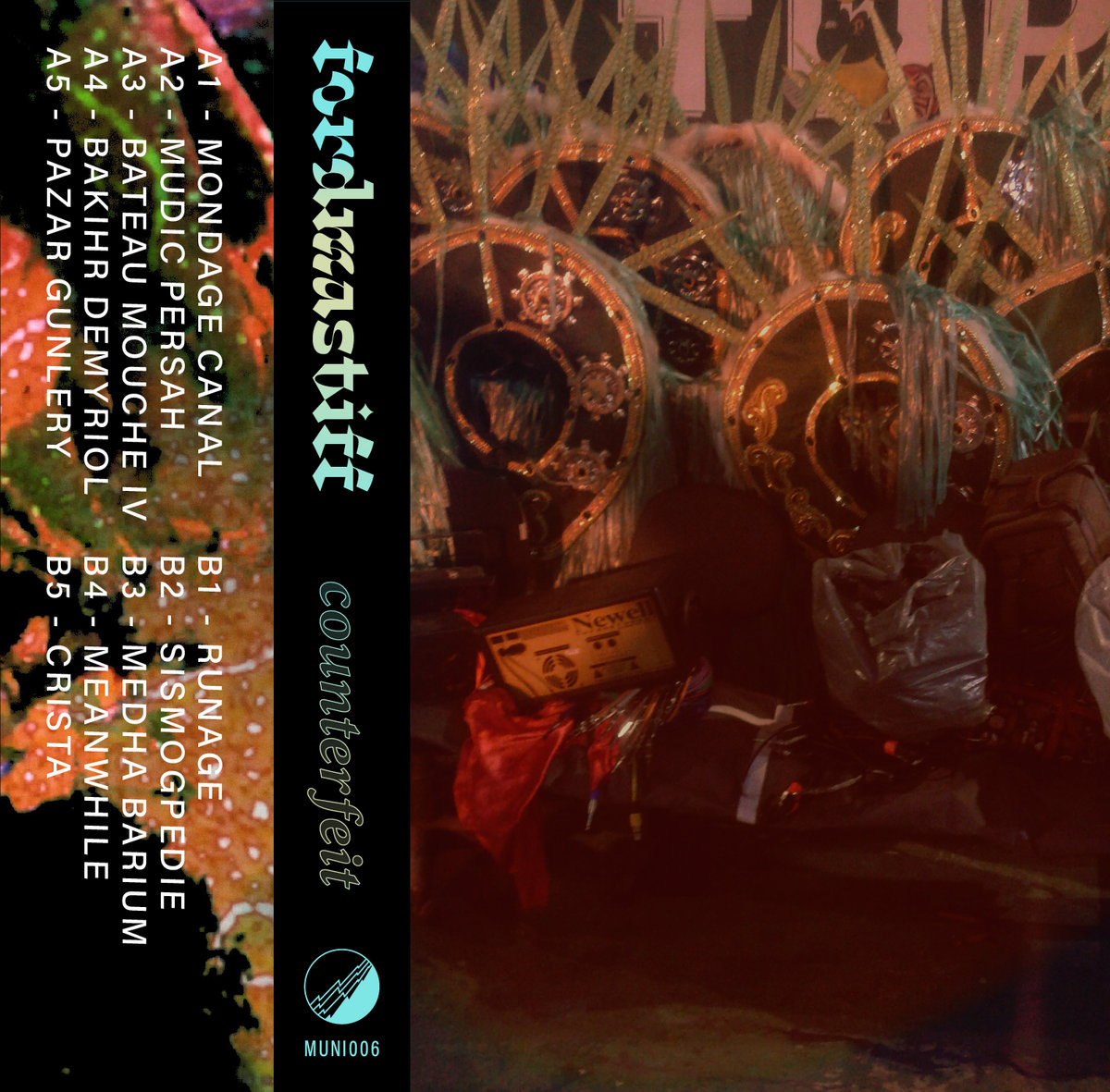 Fordmastiff
Fordmastiff
Counterfeit
(Municipal K7)
Brazilian musician Lucas Stamford (AKA Fordmastiff) wanted to explore the hidden worlds that temporarily revealed themselves during Rio de Janeiro’s iconic Carnival Parades celebration. And so, for this latest release, Counterfeit, he envisioned a soundtrack to a city haunted by shadowy figures and subterranean secrets, one where a magical realism usurped the drab hues of modern reality. “I’ve always felt the city has a kind of secret hidden reality in itself, as if beyond the visible, there was an invisible world striving to manifest through portals that become accessible between a certain part of the night and dawn, maybe around 3 to 6 am,” he explains. The songs here reflect his desire to uncover the bizarre life and movements of the city that only appear once a year.
Counterfeit takes on the form of a lo-fi crusade driven by Stamford’s need to reconcile the unseen with the material world around him. Elements of dance, ambient, and various other sub-genres of electronic music are broken down and reassembled into a cohesive perspective on how music shapes Rio and why this specific celebration briefly alters its mental and physical landscape. Synths swell and dissolve, opening the way for dizzying rhythms that occasionally include half-buried guitar lines and subaqueous vocals. The borders between what we can perceive and what we are subconsciously aware of are tenuous during this period. “Carnival is a peculiar event where that separation is subverted,” he continues, “where normality can be suddenly disrupted, and the fantasy realm takes over the city symbolically.”
 Golden Brown
Golden Brown
Moonrise Orb Weaver
(Eiderdown Records)
Recording under the guise of Golden Brown, Colorado musician Stefan Beck conducts cosmic drone experiments that use off-kilter guitar lines, odd bits of percussion, and liquefied keys to tune into some higher plane of existence – actually, it’s quite earthen in its mannerisms but it’s one that most people have never observed before. On his latest collection, the 4-track Moonrise Orb Weaver, he balances kosmiche, drone-folk, and dense layers of psychedelic noise to curate an ode to Native Americans, specifically those of the Kaw, Kickapoo, and Osage nations. This is heard most clearly on “Hol-n-roc”, a track dedicated to Hole in the Rock in Baldwin City, Kansas, a natural geologic formation that currently sits on the ancestral lands of those peoples. There is even a bit of historical narration provided in the song to explain the story of this particular place.
The other tracks wind their way through various ambient landscapes littered with diverse percussive elements, field recordings, and Brown’s meticulous attention to detail. Rather than reveal everything all at once, he slowly allows these sounds to bloom and adapt to their surroundings, casting a hypnotic spell inviting you further into their vaguely swirling depths. It’s a gorgeous set of songs, and Brown expertly navigates both the narrative themes concerning indigenous communities and the droning soundscapes on which he lays out the echoes of his heart and mind. Once you become accustomed to his way of thinking and the way in which he assembles these sounds, the music takes on a far more personal outlook, one driven by internal conversations and the stark interplay of these minimal, yet meaningful, sonic layers.
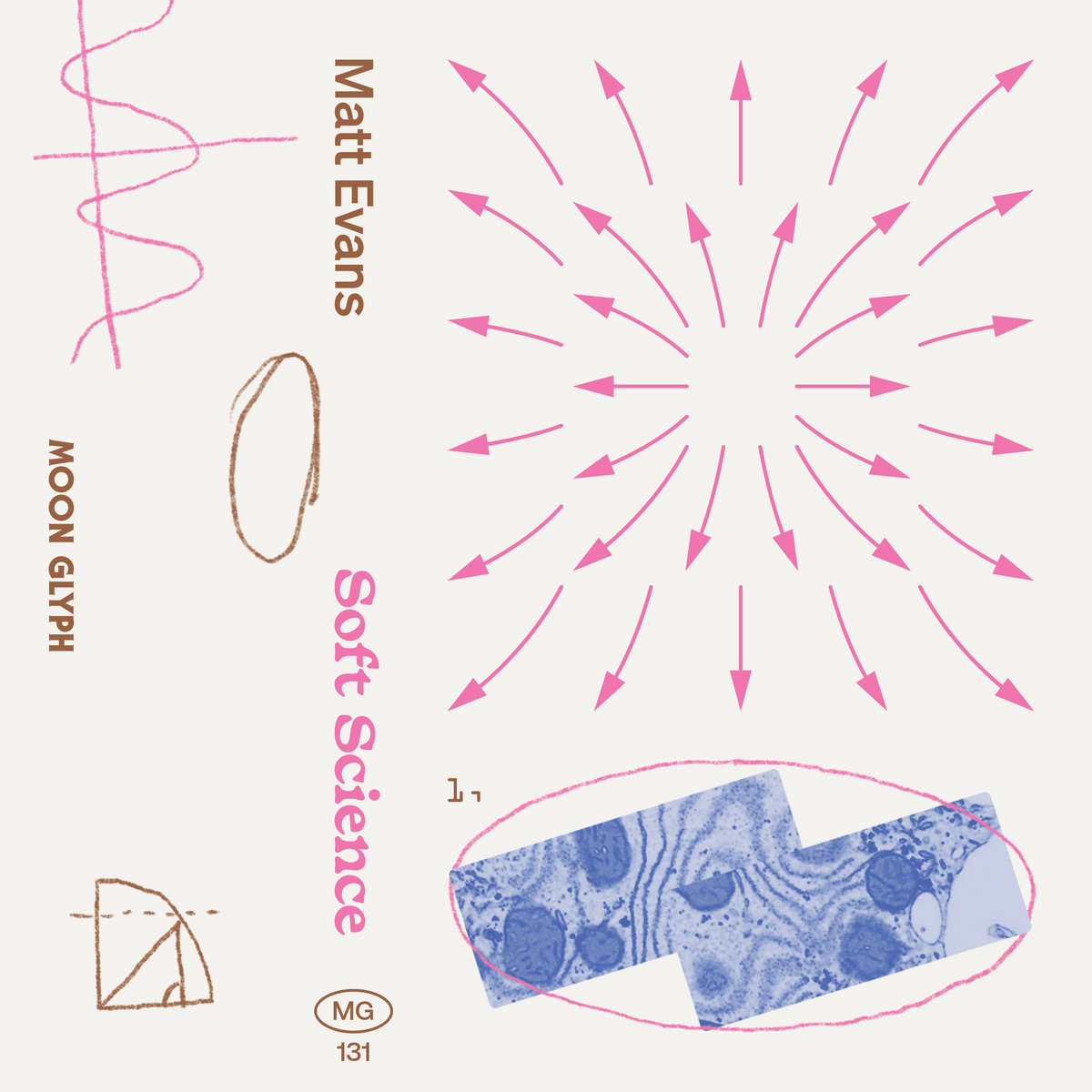 Matt Evans
Matt Evans
Soft Science
(Moon Glyph)
Brooklyn percussionist and composer Matt Evans enjoys creating miniature melodic opuses mixing jazz rhythms, electronic instabilities, and hazy ambient worldbuilding – all viewed and processed through an avant-garde lens. His work is far more dynamic and denser than typical ambient music, but you still get that same sense of musical opacity showcasing the genre’s innate transformational qualities. For his latest release, Soft Science, Evans has created a lively space where he’s able to revel in a sonic alchemy. Aided by guest spots from musicians Ka Baird and David Lackner, these songs explore aspects of sci-fi futurism through extraterrestrial synth strains and the clarity of cosmic ambience, calling to mind the atmosphere of some alien bar blasting Tom Waits while patrons stare into their rainbow-hued drinks.
Self-described as “Jambient Zone Poems”, these songs are frenetic and volatile in ways his earlier work never attempted, molding these percussion performance pieces to engulf an orchestra of Casio keyboards. But it’s not all forward momentum and galloping tempos; he pulls back at times to let a certain quiet fall over each track. This juxtaposition between the noisier elements of the music and these moments of calm help to keep Soft Science from ever feeling familiar or too keen to adhere to genre traditions, as gauzy and shapeless as they may be. This album examines the effects of a boundless creativity unbound by specific musical lineages and amplified through Evans’ own impressionistic perspectives and personal associations. Erratic, graceful, and beamed in from distant solar system, Soft Science is an intricate and intriguing glimpse into one man’s creative process and the emotional connections he makes with his own work.
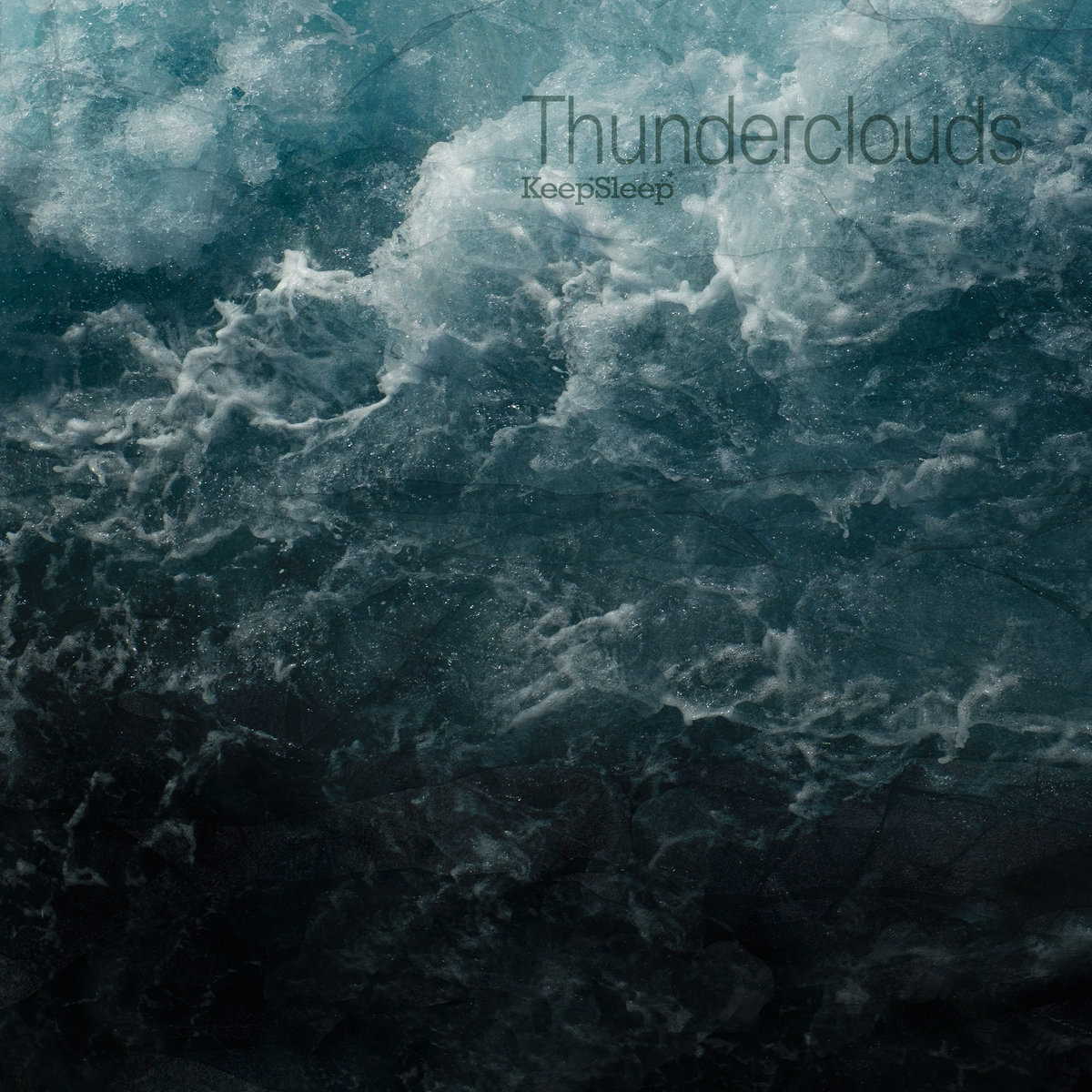 KeepSleep
KeepSleep
Thunderclouds
(No Problema Tapes)
The ambient work of Chinese musician KeepSleep possesses an innate tacticity, perfect for people craving those ASMR triggers. Burbling tones, aqueous melodies, and synths that stretch out for miles are all entangled together in a foggy collection of mostly instrumental passages designed to engage multiple senses and surround you in their omnipresent atmospheres. She was inspired to create her latest album, Thunderclouds, after watching Hideo Nakata’s Honogurai Mizu No Soko Kara, a psychological horror film that reveals the lengths a mother will go to in order to save her daughter from supernatural forces. The opening track, “Dizziness”, especially feels drawn from the watery depths of that movie’s headspace, incorporating dark textures, melancholy ambience, and liquified landscapes to evoke loss, sacrifice, and unnerving emotional instability.
Recorded in a 360-degree panorama, it often feels as though the music is pressing in on you from all directions, giving little room for escape or distance from its shadowy recesses. Occasionally, you’ll come across moments where unexpected sounds reveal themselves – specifically on “Mirror where she introduces bells, develops a slight percussive presence, and offers her own vocalizations in service to the track’s overall murky aesthetic. The album is well-titled as each song grows into a harbinger of things to come, even if the resolution of those events is left to our own imagination. Portentous but never without some small bit of lightness to balance out the weight of its movements, Thunderclouds is both a tactile workout for those wanting engagement on multiple sensory levels as well as an enveloping series of measured rhythmic disturbances just waiting for the right time to burst apart and swallow all in their path.
Richmond hardcore band Faucet operate within a world of distorted noise, punk rock freneticism, and volatile emotional volatility. It’s a glorious racket and one that deserves far more attention. Formed in 2018, the band shared their debut album, Bitter Insane Melting, in 2020, an unhinged brew of heavy punk and noise rock, and they were set to take their roar on the road before the pandemic stalled those plans. But from disappointment sprang inspiration, as the band took that time to begin working on their sophomore record, Lament KSO, and are now ready to unleash it upon the senses of their fans. Stitched together from group recordings and solo performances, is an artifact of how the band coped with and processed the frustrations, solitude, and distance that marked this period in their lives.
Building upon the ferocity and noisy eruptions of their debut, Lament KSO distills their brand of chaotic, punk-indebted hardcore machinations into its purest essence, aided by the howling voice of singer Laura Marina and the locked-in interplay of guitarist Landon Walker, bassist John Graham, and drummer Abdul Hakim Bilal. There’s no excess here, just a presentation of the brilliantly sinewy explosions the band has been refining since they first began performing. The guitars screech and shudder, serrated instruments being pulled apart while the music is pushed forward via pummeling percussive outbursts. Marina’s vocals barely hold it all together, but it’s this sense that it all might collapse completely which lends it such an urgency and demands that we pay attention to each and every one of its cathartic (and frankly, pissed off) revelations.
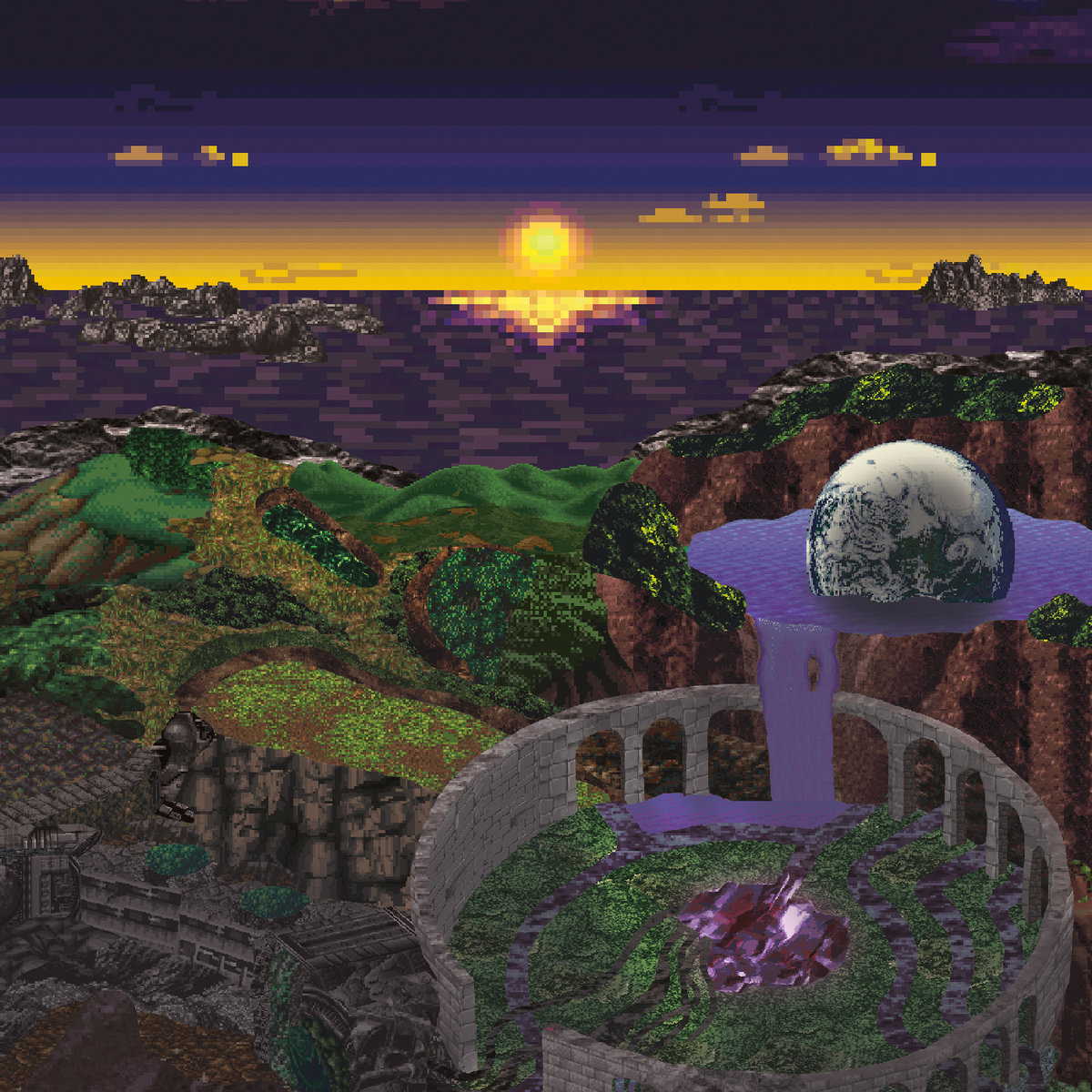 Pulse Emitter
Pulse Emitter
Dusk
(Hausu Mountain)
Portland-based producer-synthesist Daryl Groetsch has a considerable back catalog of music, releasing around 80 albums over the last two decades. It can be daunting to approach, let alone explore with any sense of completeness, but when taken on their own, his albums are wholly immersive and imminently approachable. Comingling kosmiche, new age, and drone, he balances more austere electronic aesthetics with punchy synth rhythms, creating a sound as dynamic as it is intuitive. On his latest album, Dusk, he opts for something a bit more grandiose at times, more attuned to cosmic change and the ways in which various empyrean occurrences allow us to reflect on the significance of things on Earth. Alternately focused on widescreen experiences and those shrunk down to something a bit more internalized, Groetsch uses these songs as a vehicle for personal meditation as well as for expressions of much larger creative insights.
The use of droning tones, flexible synths, and warbling melodies all act as siren calls to draw us further into the album’s dense patchwork of noisy substructure. Taking cure from various terrestrial climes, tracks like “Snow Diamonds” and “Temple in the Mountains” use natural formations and seasons to act as sources of musical adaptation. Exploring the cycles of life, the music becomes a statement on renewal and the act of creation. As each track rushes forward in its performance before drifting back to some distance, you get a sense of the scale Groetsch is working to present. Dusk is a masterwork of synthetic reconstruction, a bridge between our ideas of organic origins and the artifice with which we so often surround ourselves. He leaves no doubt which is preferred, and which offers the greatest resource for sustained artistic expression.
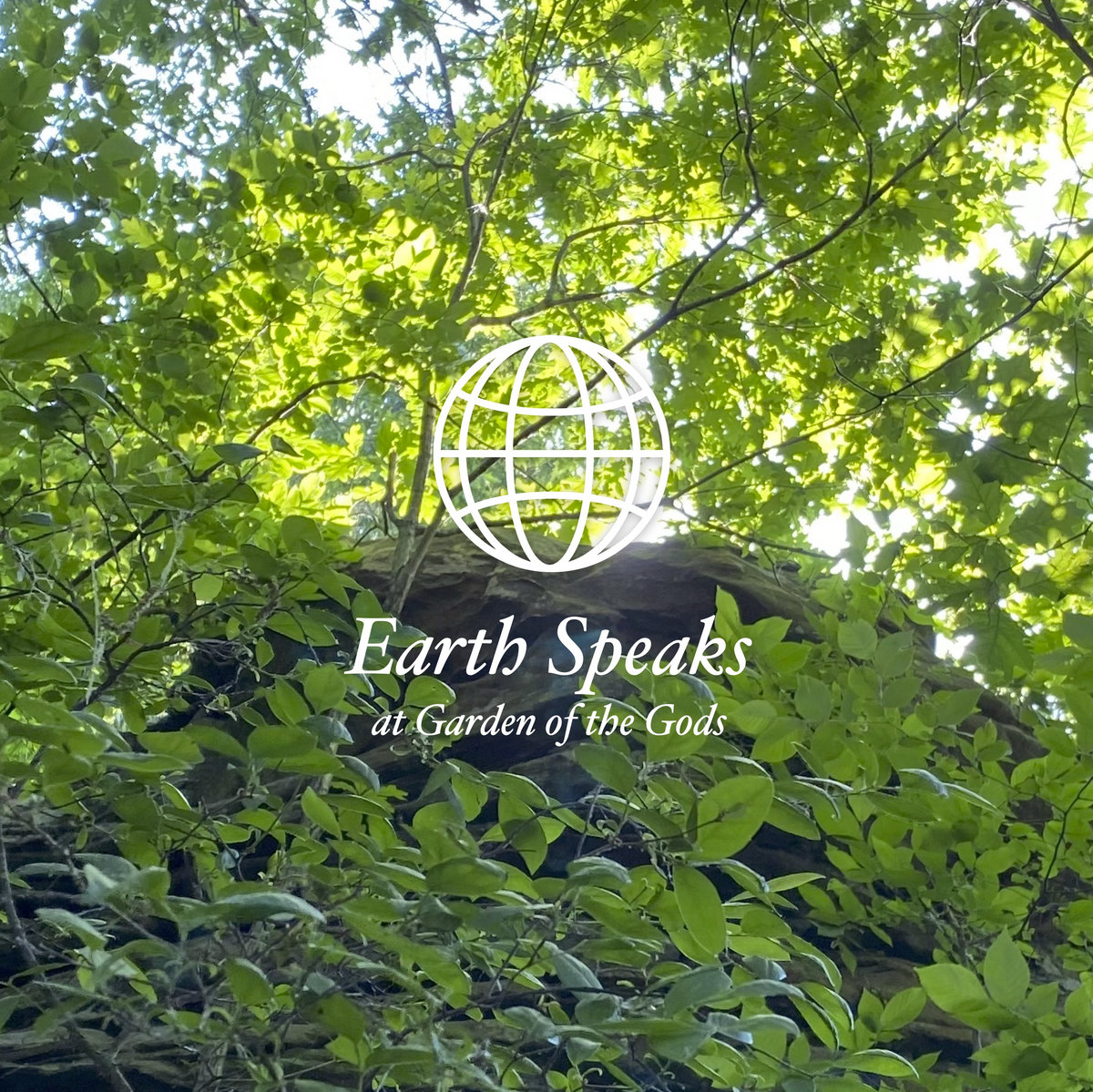 Earth Speaks
Earth Speaks
at Garden of the Gods
(Home & Garden)
Recorded by Matthew Himes (under the moniker of Earth Speaks) at Garden of the Gods Wilderness in Shawnee National Forest, which is located in southern Illinois, at Garden of the Gods is a meditation tape filled with birdsong, the hum of unidentified insects, and the wind as it passes through the treetops above. There’s no grand concept to the tape, just a 30-minute visit to a place where the worries and struggles of life can be loosened for just a bit. It’s fascinating how these common sounds begin to take the shape of a structured rhythm in your head; it functions as a sort of melodic reassessment of the everyday noises we often take for granted. As each sound appears and retreats, the world it presents becomes more fully realized, resulting in a sonic landscape where this push for relaxation and internal readjustment allows us to focus on specific sounds while blocking all out the unnecessary things surrounding us.
And while Himes isn’t trying to reinvent the wheel here, this act of “musical conservation” as he describes it is nothing short of revelatory. By allowing the natural world to exist as it has for countless centuries and using this tape as a vehicle for its majesty, he’s accomplished a truly inspirational feat: he has created an aural artefact of significance for future generations – never mind the peace of mind it provides for those of us listening now. It becomes a call to forgo false ambitions and to concentrate on what truly makes you happy and content in your life. The simple things are often the most meaningful, and through this collection of natural sounds, we begin to realize that those things are much closer than we might have thought.
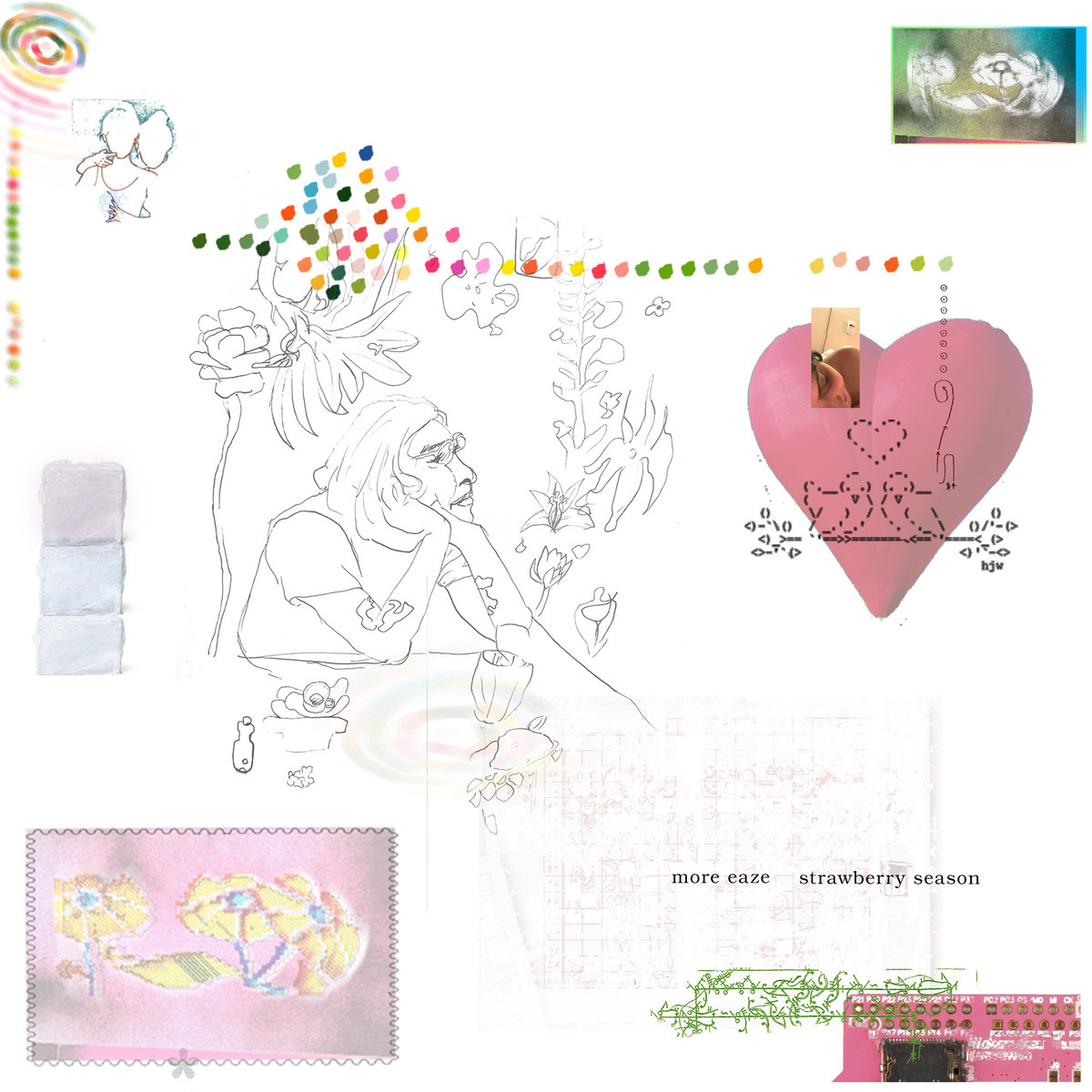 More Eaze
More Eaze
Strawberry Season
(Leaving Records)
Strawberry Season, the latest album from Austin musician More Eaze, is all about affirmation in the face of terrible circumstance. And while the last few years have been a low point in many of our lives, with the pandemic and other health concerns battling for attention among reports of war and the fragility of many social institutions, multi-instrumentalist Mari Maurice has is taking time to reflect upon the positives that can, with a little encouragement, be seen all around us. This record veers between ambient pop and experimental electronic aesthetics, culling what she feels is unnecessary and assembling the rest into a vivid and buoyant portrait of joy amidst personal hardship. These songs are strewn with circuital ephemera, stringed flourishes, and moments when the monotony real life intrudes upon our experience with the music – but even that is part of the album’s charm and relatability, offering the world as it is, complete with all the daily minutiae we engage with and process.
When the music starts to get slightly noisy, which can happen at times, there is always a restraint shown, a feeling that she doesn’t want the dissonance to significantly shape the tones on display. As its name suggest, Strawberry Season is all about the sweetness located all around us, suggesting a balance between the apprehension we all feel and something more optimistic is manageable, though we have to work at maintaining that equilibrium as the world continually sets obstacles in our path. We are offered a reprieve if only for a short time, a series of moments designed to help us adapt our thinking and to align our thoughts with brighter recollections and loving memories held close. We may not know when any sense of normalcy will return o our lives, but this record attempts to create a buffer between us and the harsher elements we face, driven by a rhythmic tenacity and electronic innovation that leaves your jaw on the floor and your heart on your sleeve.
 Craig Salt Peters
Craig Salt Peters
Stuck in the Present Tense
(Lost Sound Tapes)
Sometimes things just don’t work out the way you plan. Just look at Seattle indie rock musician Craig Peters and his latest album, Stuck in the Present Tense, a collection of songs he wrote around eight years ago but which are only now coming together for release. Originally aided by guitarist Jacob Jaffe, bassist John Broback, and drummer-keyboardist Zach Burba, the band eventually fell apart as each person moved away and pursued other interests. But in the winter of 2021, they regrouped in Seattle and worked their way back through these songs, recording them at the Unknown in Anacortes. Relearning these songs felt like skimming through an old photo album, remembering the past but feeling as though you’ve likely grown past whatever you needed at that time. These songs speak to the past, to nostalgia and ache long since buried but still affecting the present in unpredictable ways.
And though they don’t quite have the emotional resonance they did when Peters first penned them, they still possess a complex perspective on memory, ambition, and dreams – looking at these themes as both sanctuary and devourers of time. From the raucous fretwork of opener “Forecast” to the measured grooves of the title track, this record ambles and stumbles and occasionally stomps as it finds ways to make familiar sounds feel refreshingly innovative and more than the end result of an amalgam of influences. Often recalling the jaunty indie-pop of bands affiliated with the Elephant 6 Collective, but with a more muscular foundation underpinning some tracks, Stuck in the Present Tense is an examination of existential drama as seen through the blur of ordinary experiences, and it’s this insight into everyday occurrences which makes it feel so uniquely attuned to Peters’ own emotional history.
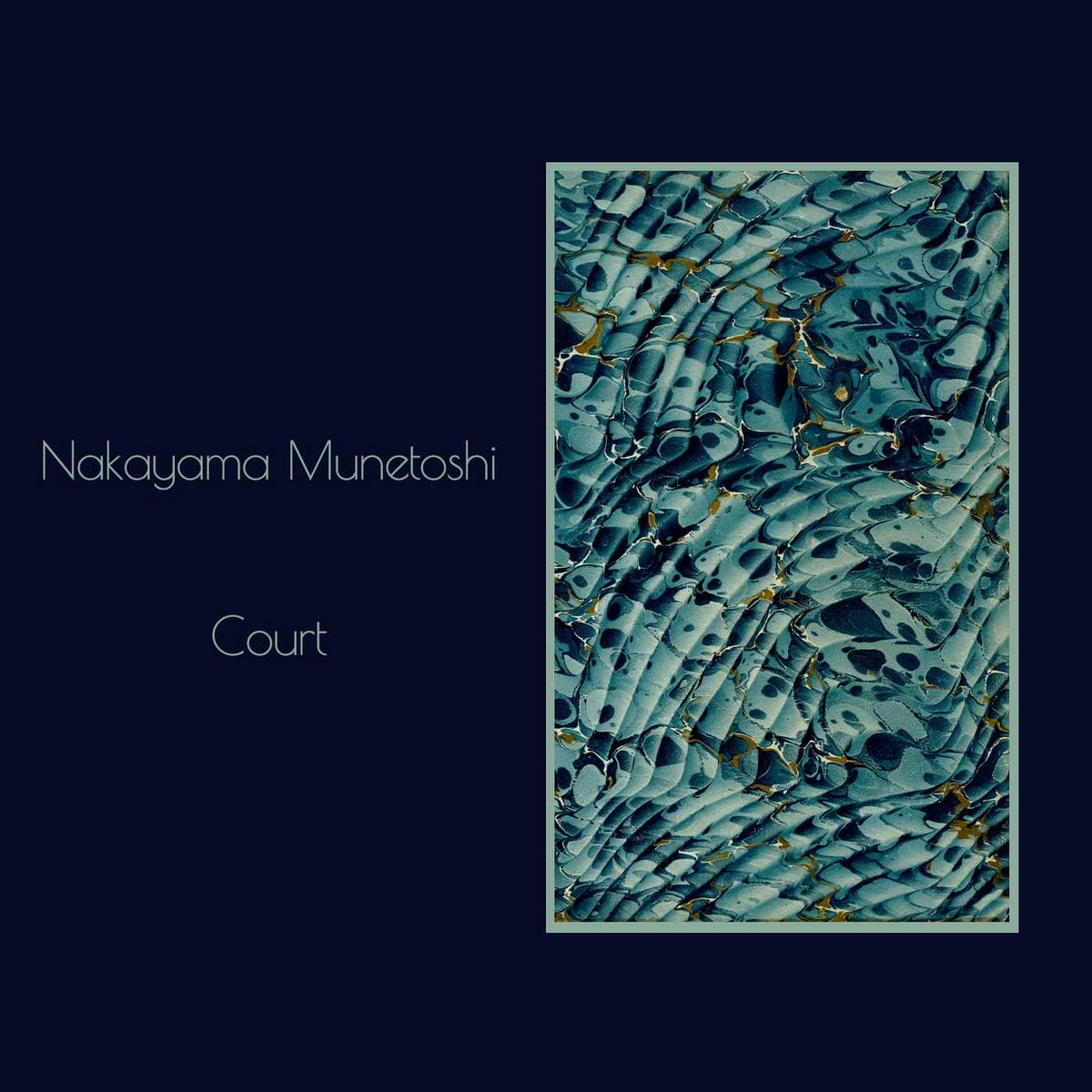 Nakayama Munetoshi
Nakayama Munetoshi
Court
(Muzan Editions)
Composed entirely from modular synths, Buchla Easel, and a Yamaha DX7, the latest collection of minimal electronics from Japanese artist Nakayama Munetoshi feels skeletal, crystalline, occasionally kaleidoscopic. It’s also impossible to ignore once you’ve observed its hypnotic rhythms. Despite its relative austerity, it doesn’t feel slight or underweight; granted, the tones are measured and slide by without much in the way of precise direction, but Munetoshi infuses these sounds with an unexpected density and the clattering of interior clockwork. There are select moments when the tracks take on an aquatic appearance, with dripping, clicking instrumentation recall the slow ebb and flow of circular tidal movements. You lose all sense of time here, as the music blurs the boundaries between the world we’re hearing and the one in which we physically exist.
Some songs such as “Vision” and “Carnival” stand out for their (relative) momentum and noisy structures. Set against the softer, more subdued ones like opener “Admission” and “Clock”, those tracks act as counterweights to produce a sonic equilibrium grounding the album in a wide variety of timbres and tempos. As each begins their work to stretch and billow and display a unique fluidity, we come to realize that Court is actually more defined that at first glance. It’s true that you could spend all day trying to disperse the gauzy atmospheres here in search of some concrete theme, but that continual pursuit of definition is what elevates these sounds above the usual flutter and airy nature of most ambient music in general. Munetoshi revels in vagaries, letting the music act as a transitory device for our own analyses, providing a solid foundation for the interpretive acts we perform as each song is experienced and processed.
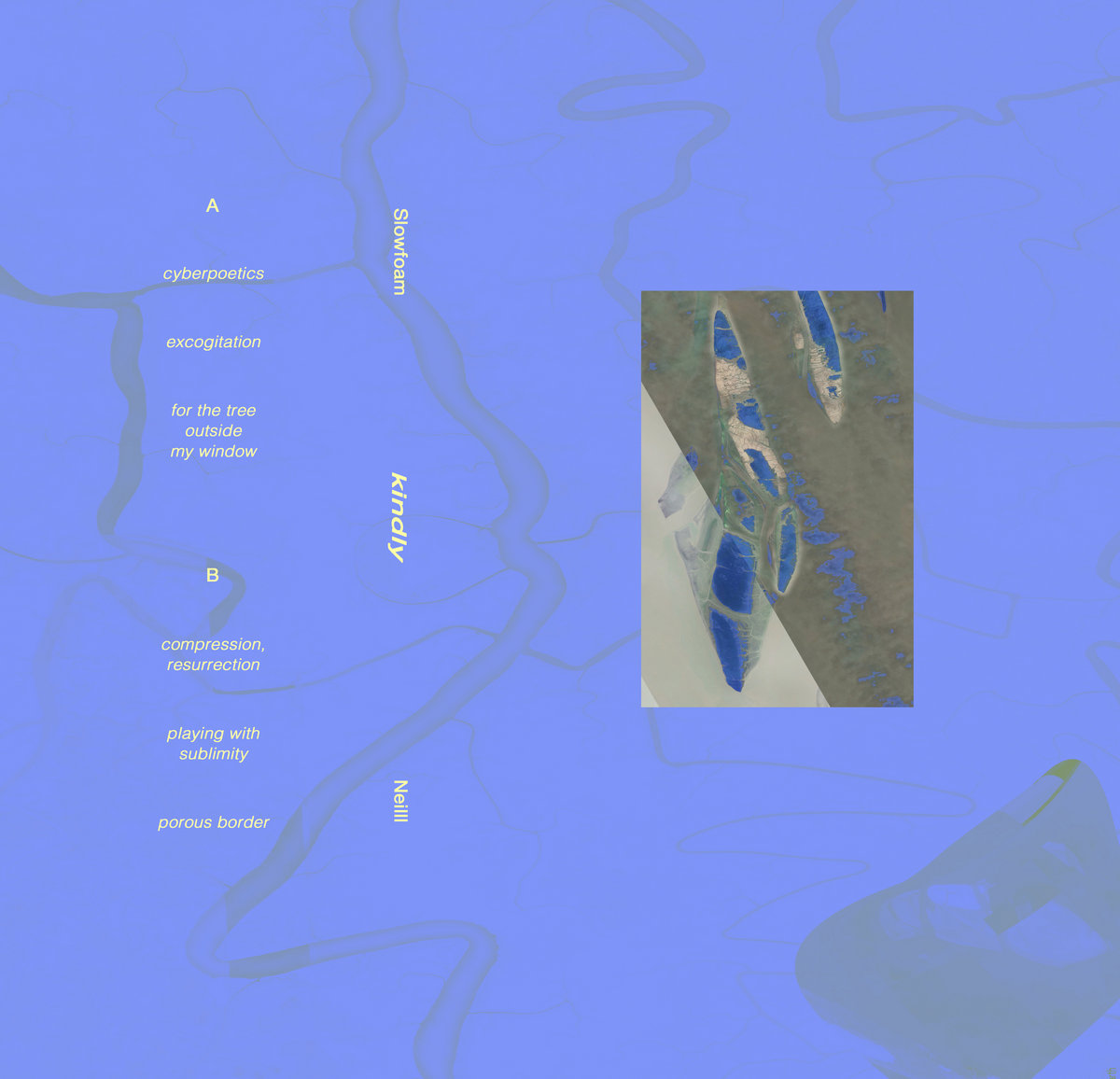 Slowfoam & Neilll
Slowfoam & Neilll
kindly
(Lillerne Tapes)
There’s more lurking beneath the surface of kindly, the new collaborative album from Berlin musician Madelyn Byrd’s Slowfoam moniker and Los Angeles artist Tim Bomberg’s Neilll project, than you might realize upon first listen. They’ve created a version of ambient music that it far more dynamic than is usual, balancing tones that are warm and inviting with those that are prickly and keep their distance. There is a playfulness to the collection that highlights their innate musical affections, offering bright avant-garde rhythms that stand in contrast to more serrated noises welling up from the depths of their collective creativities. There are times when the sounds are as dense as granite, allowing little to no light to pass through its obfuscating perspectives, but then you have periods of lighter atmospheric disturbances, moments when the shadows retreat and give room for warped melodies to unravel into distorted reflections of experimental pop and ambient euphoria.
From the opening warbles and wobbles of “Cyberpoetics”, the record never sets specific expectations, nor does it explicitly state its intentions, opting to leave it all rather vague and mischievous. The wide-open areas and hissing echoes of “Playing with Sublimity” run counterpoint to the noir-ish clangor of “For the Tree Outside My Window (is that a saxophone?) – and it all works to further the disparate approaches that Byrd and Bomberg take to corral these often-uncharacterizable sounds. Plinking notes balance alongside the shake of spacey synths within a series of blurry ambient environments. With each progressive plunge into these crackly and heartfelt experiments, you become more aware of the complicated emotional framework they both tap into in their pursuit of a broader rhythmic, and arrhythmic, connection with their audience, and kindly becomes less a private conversation between two musician and more a roundtable where all perspectives are allowed to be expressed and explored.
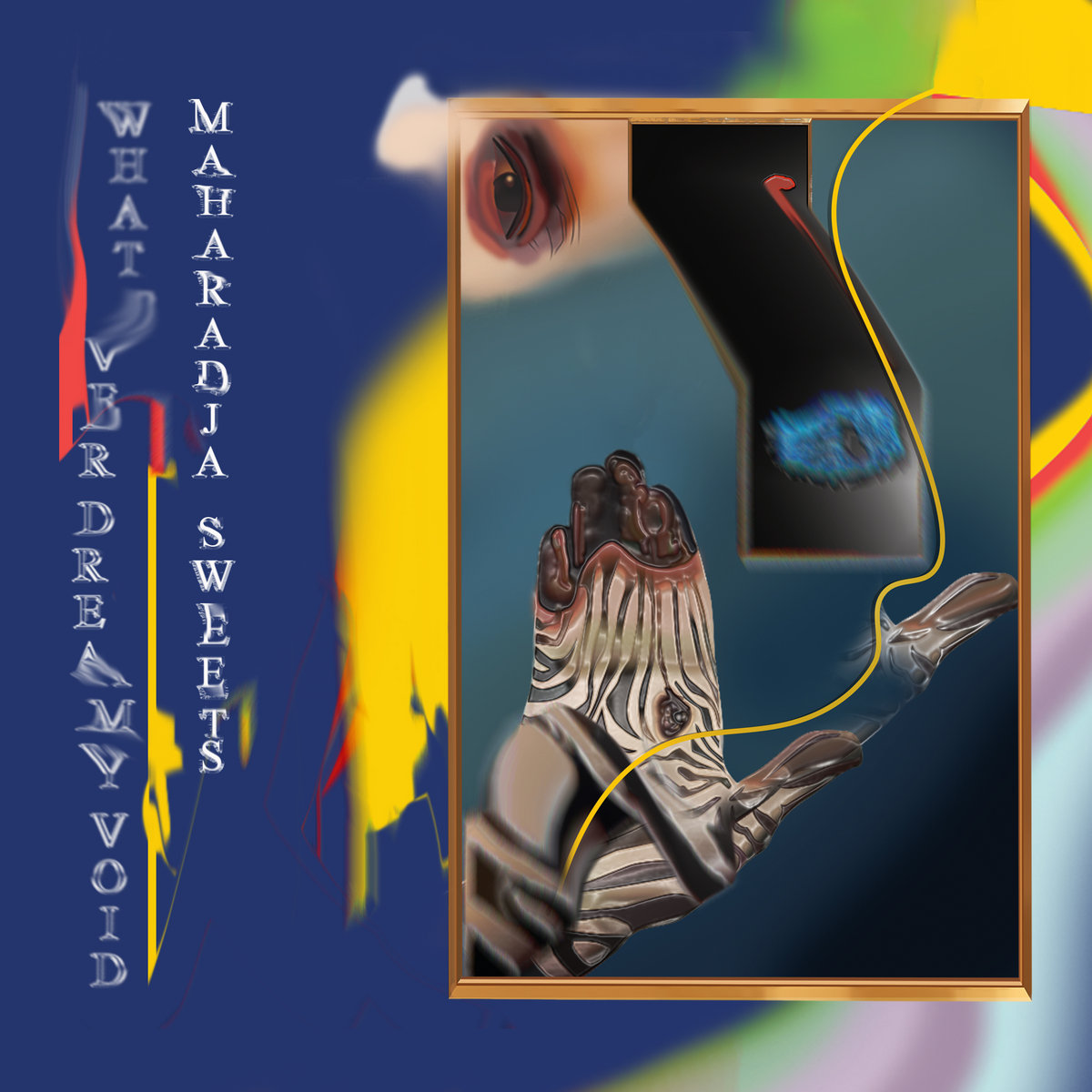 Maharadja Sweets
Maharadja Sweets
Whatever Dreamy Void
Oxtail Recordings
Brooklyn musician Richard Exelbert develops a mysterious presence by effortlessly divining a mixture of electronic experimentation, bedroom pop blurriness, and heart-on-sleeve folk ruminations which speaks to his influences as well as to the importance of reconfiguring those sounds and allowing them to have the freedom to wander under their own impulses. And Whatever Dreamy Void is a perfect example of how he manages to blend these different aesthetics without losing their rhythmic individuality. It’s nine tracks of lo-fi disintegration, and it’s a privilege to watch as he dismantles each while maintaining a series of cohesive atmospheres in which they can flourish. They make their way from ramshackle folk-pop confessions to ambient-leaning electronic experiments, creating a smeared landscape of musical hues and melodies built from stray thoughts and wondrous revelation.
There’s a sense of creative abandon here, as if Exelbert simply allowed his instincts to run wild and emerged with this collection that spoke to his own inspirations while also feeling completely unburdened by any specific musical histories. He roots around in some familiar sounds, but the execution possesses an off-kilter genius that marks it someone who finds purpose in the act of rearrangement and adaptation. It’s an apt title as well, as these songs often seem to be whirling around in some hazy formless space, ready to erupt at any moment but keeping their plans close to their hearts. There are times when it sounds as if we’re hearing them through some ghostly barrier, an incorporeal demarcation that separates their world from our own. It can be disorienting trying to parse out meaning and intent, but it also feels refreshing to not have everything spelled out in big bold sentiments. Whatever Dreamy Void is a testament to what can be conveyed without strict emotional alignments and driven by a desire to offer an impressionistic canvas for intimate observation rather than dwelling on blunt force realizations.
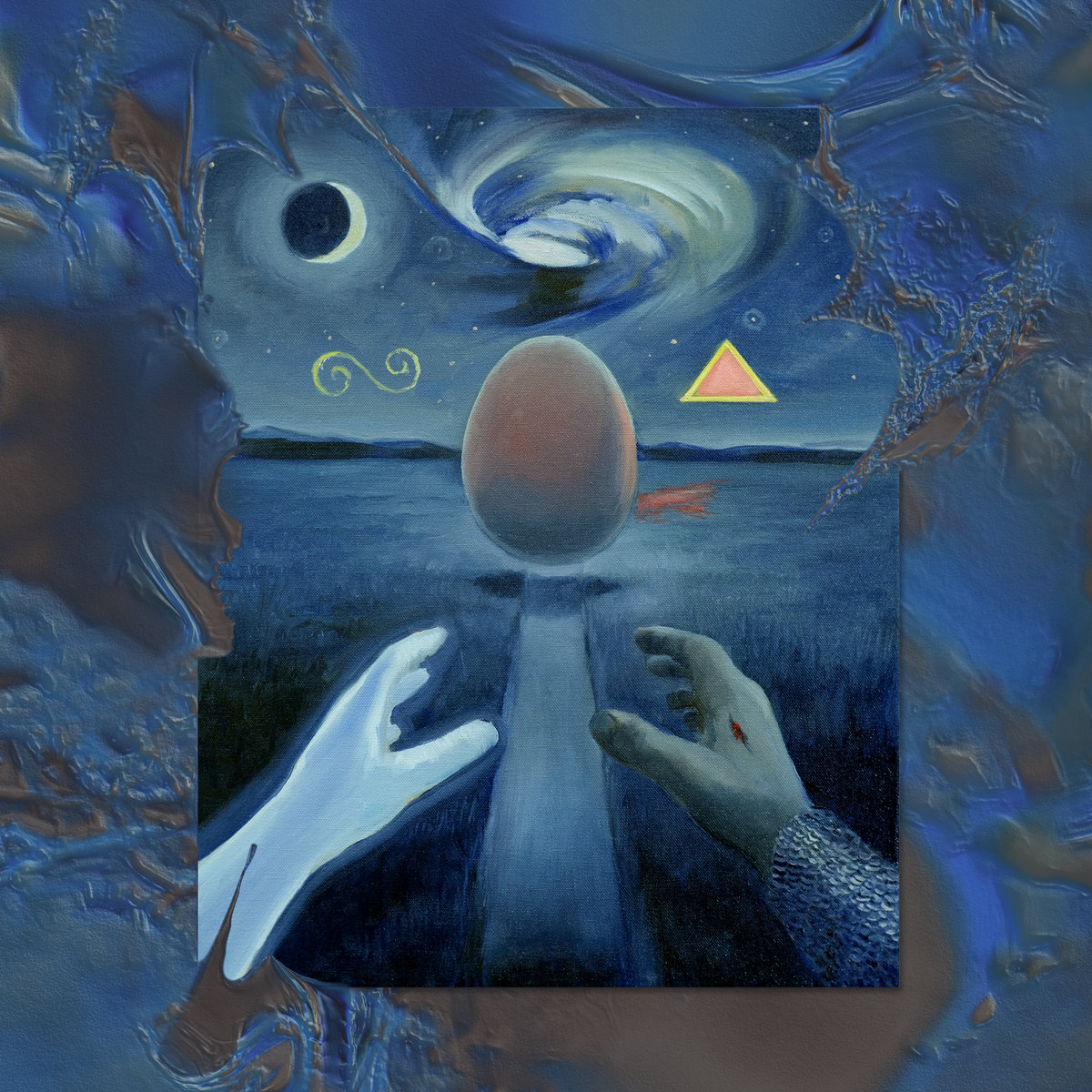 Andrew Oda
Andrew Oda
Back to the Body
(Mappa)
Back to the Body, the latest album from electroacoustic artist Andrew Oda, is all about processing trauma and the ways in which we move past it to find some sense of resolution and healing. Via a series of ambient soundscapes, he takes us through the stages in which we address and engage with feelings of hurt, anger, and acceptance – and in these wordless musical offerings, we’re given room to explore these emotions without fear of judgment or reprisal. Oda has said that these songs are about reaching a place “where true intimacy can happen…a place of forgiveness of self and other”, and it becomes evident quite early on that he has created a record which allows us to do just that. As easy as it is to become lost among the glistening synths, piano, strings, and guitar strewn about these tracks, you do get a sense that he keeps us on a path toward solace and comfort, and never wavers in his belief that light can always break apart the darkness.
Throughout the album, Oda presents moments when light washes over you, the first rays of a new day, the recognition of forward movement. The trauma we all deal with shapes us in ways we might not realize, and this is a central theme behind Back to the Body. Rather than allowing the scars and emotional devastation to define us going forward, the album suggests that we can turn the experience of confronting these wounds into a crucial part of our mental health recuperation. Dissonance does occur on occasion, such as on closer “i forgive you, i forgive me/trust that we are held(womb)”, but even then, it eventually shifts to a more spry, danceable shuffle. The overarching narrative built into these songs is presented without much context, giving us all ample space to approach and connect at our own pace, existing within this landscape of swelling rhythms and atypical melodies while we try to sort through our internal and external struggles.
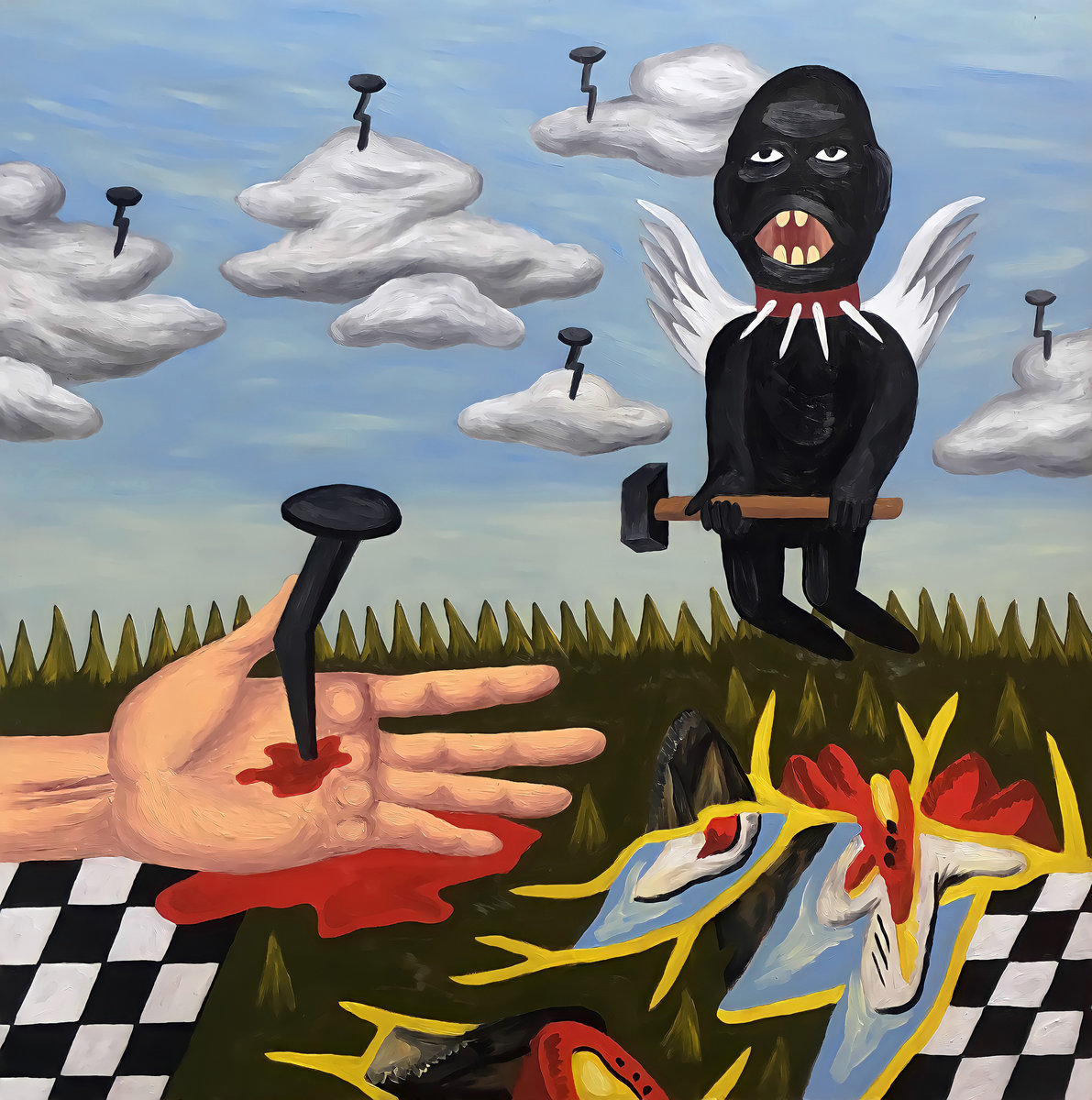 Eugene the Oceanographer
Eugene the Oceanographer
The Maze
(Biloxata)
Under the alias of Eugene the Oceanographer, musician Matthew O’Toole has long been an advocate of cross-genre embellishment, finding different ways to connect discordant sounds in an attempt to reveal the common roots between these disparate musical lineages. Blending ambient, plunderphonics, cold wave, experimental, and punk, he’s developed an aesthetic as unusual as it is revelatory. On his latest release, The Maze, he turns his eye and ear toward the shared histories of Ireland and Ukraine, two seemingly unrelated countries, and focuses in on themes of occupation, revolution, and famine. From the opening bells and plinking synths of “You are Now Entering Free Derry” to the chaotic electronics of closer “Перм-36”, the album revels in its ability to lift elements from practically anywhere and to compile them in such a way as to reveal hidden nuance and relevance where none existed before.
Recorded in Kyiv, the album features guest appearances from Maja Nikolic, Gentils Floquets, and Cult Party, showing that O’Toole is just as happy to have collaborators as he is to concentrate on his own unique musical perspective. There’s an underlying tension to these songs, a feeling of unresolved hostility and hints that some things can’t be fixed, just remembered. Between grimy dancefloor arrythmia and lo-fi punk clangor, The Maze, never loses its own drive toward genre deconstruction and adaptation. Even with all of its shifting musical influences, the record never feels disjointed, only anxious to draw in more sound sand pull them apart at the seams. It’s eager to see what can be made from the detritus of noise and a desire to use these various sounds as connective tissue between two geographies so different in many ways and yet so similar in others. The end result is an album of contrasts and resemblance, an ode to human relationships and the ways in which he can destroy those personal networks and how we might also repair them.


